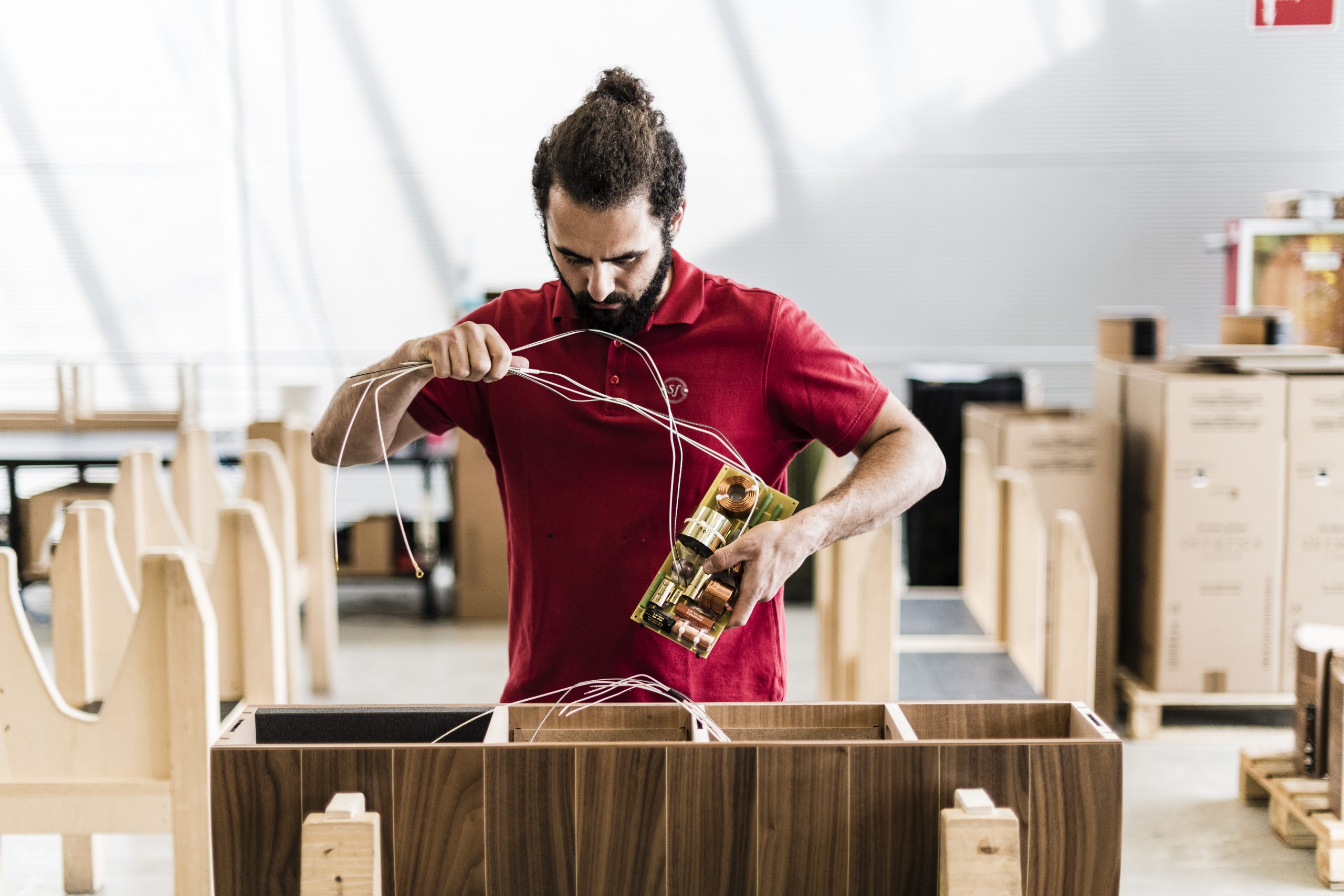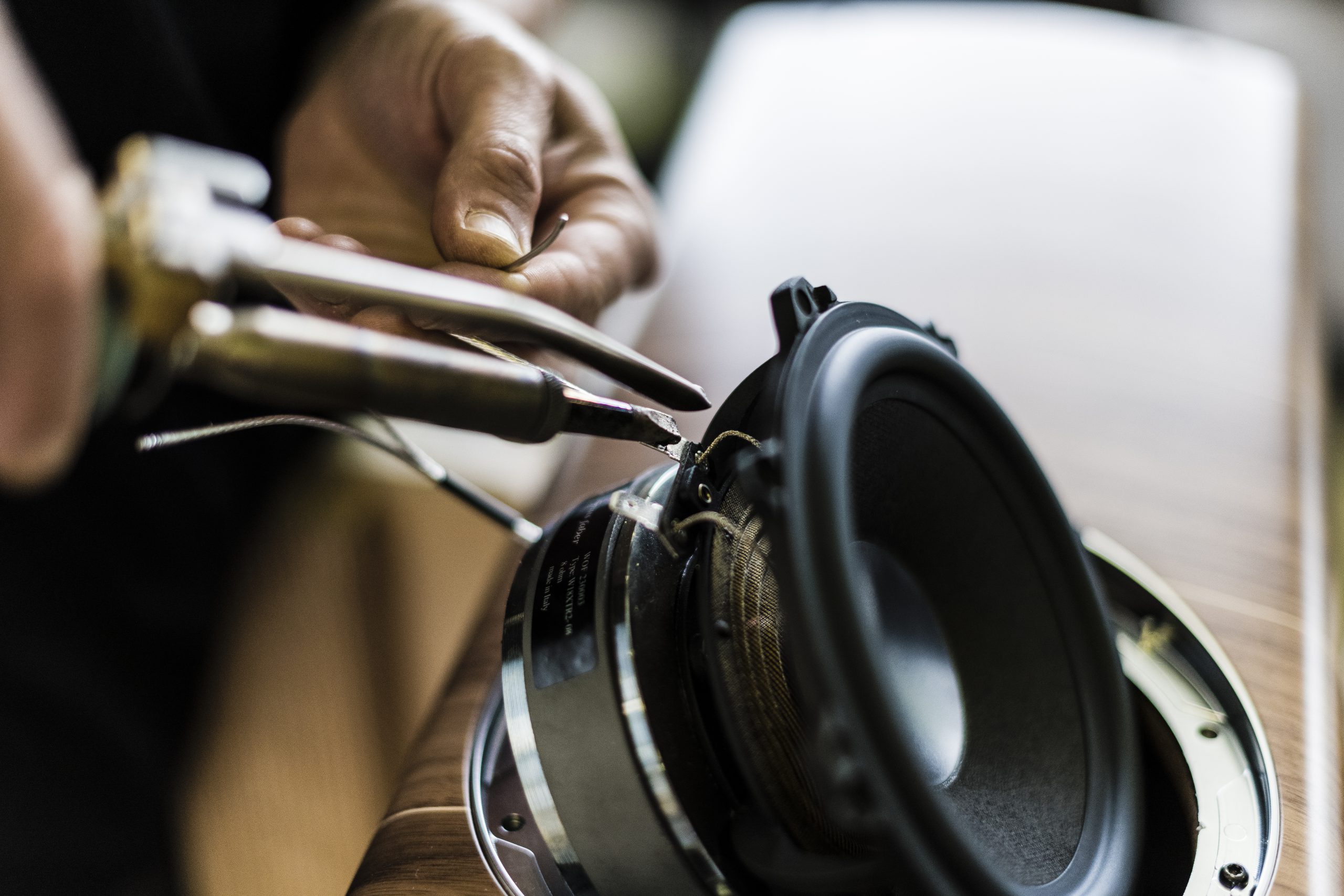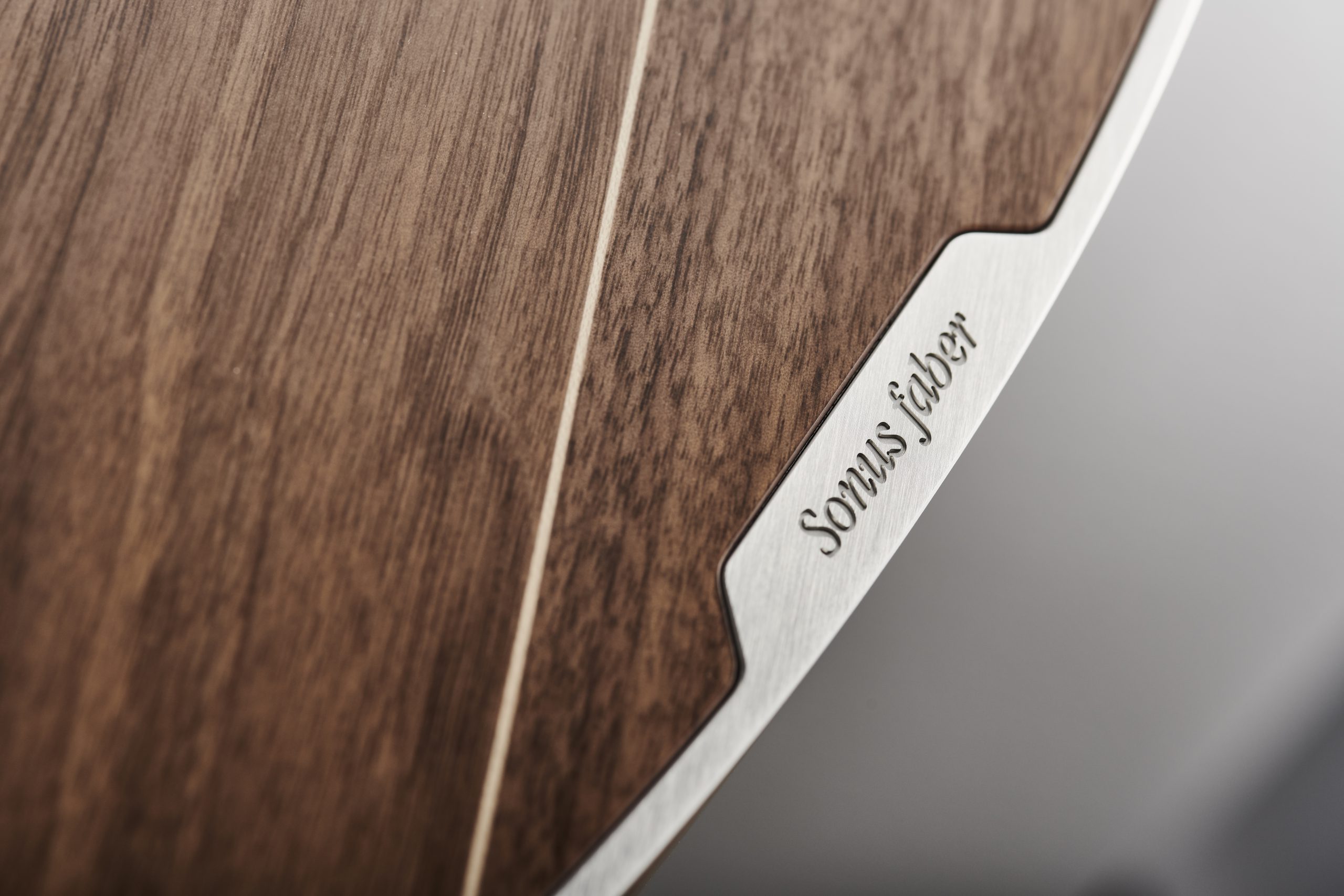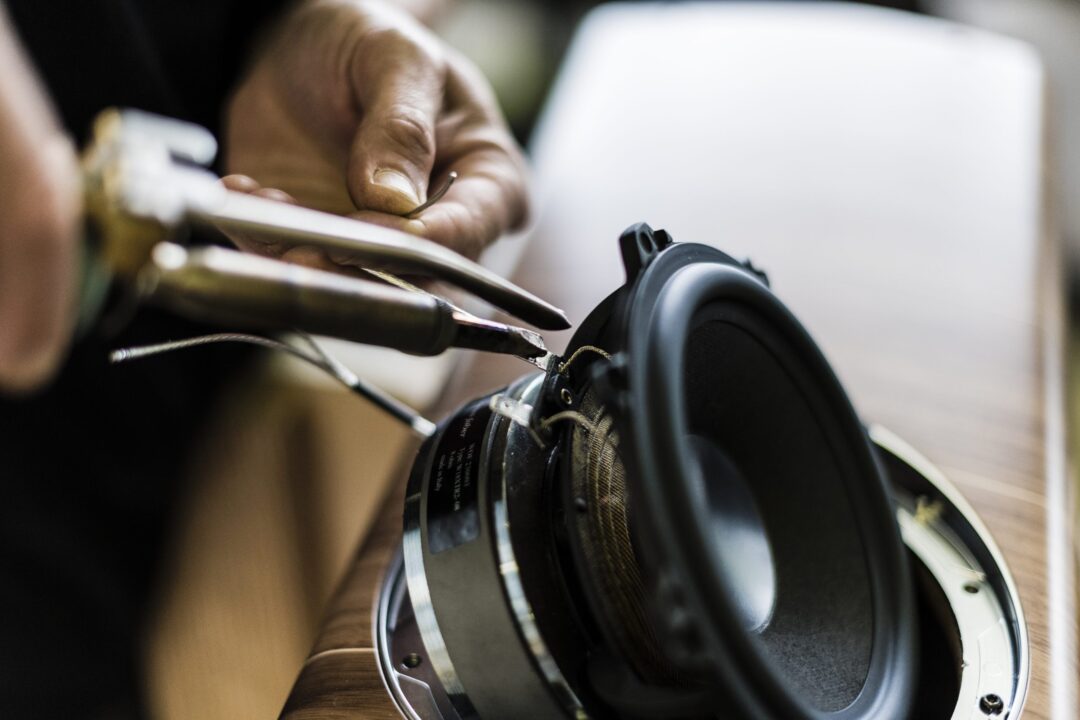I could tell it felt like a déja vu. That I had been here before. Because it absolutely looked like something I had been involved in before, in 2013 if I remember correctly. I had to check. The answer was 2014. At least that was when I published the test of Sonus faber Olympica III, after a few months of living with what was to become one of our reference speakers.
Now the heir stood before me. The color did not match, but it was configured in the same way. Two bass elements at the bottom of the cabinet, with a treble and a midrange placed on a common faceplate. The name was the same, only with a Nova added at the end, to tell me that this one was new.
I saw it so far. The original came to us in a dark wood veneer, these were clad in walnut veneer from head to toe, and I could not on the go find any more beautiful speakers in the same price range. I sat and stared at the speakers for a while. Without any music. It felt good, and I wondered if they would dress to stand in my own living room. The light wood veneer would blend in nicely at home. They had not had to play all the time either.
I could just sit and watch them.

Fatto a mano
The new Olympica Nova series is intended to replace the outgoing Olympica series, but although the speaker for speaker is comparable, I experience the Nova models as far better speakers. Not just a little, but much better. Despite the impeccable qualities of the old edition, this is one division up in sound quality, and I dare say, also in construction quality.
Maybe it would have been smarter to just call it Nova, and leave the Olympica name alone.
For the speaker series is new from the inside to the outside. The basic design of all the models from the compact speaker Olympica Nova I to Nova III, is identical to the outgoing generation Olympica. one new model has been added, the even larger Nova V, with three bass elements where Nova III has two.

The Nova series has more in common with the Tradition series of Sonus faber, than the previous ones.
The veneered wooden cabinets are assembled, veneered, assembled and packed in Italy. The curved cabinets are made of eight layers of pressed and bent wood, damped inside with transverse reinforcements, with acoustic damping along the inside of the cabinet.
The curved sides end in the Sonus Faber’s Stealth Ultraflex bass reflex slit, a vertical opening in extruded aluminum that dampens low-frequency turbulence and increases the range of the bass. The top and bottom plate are also made of aluminum, but clad with veneer in walnut or wenge wood.

It looks really good – and expensive – and with the included spikes or feet screwed into the base plate, it looks like the speakers are floating across the floor.
New speaker elements
Sonus faber uses a 28mm tweeter with the same DAD technology they use in their more expensive speakers (Damped Apex Dome).

The midrange uses a light 15 cm membrane in cellulose, with fibers from kapotre a hibiscus called kenaf. At the back is a swivel coil in a copper alloy, while a phase chamfer in aluminum is placed in the middle with a copper ring around. The two 18 cm bass elements use two layers of cellulose in a sandwich with syntactic foam.

Sonus faber uses something they call Paracross technology in the crossover, with specially designed capacitors, which will make the crossover filter less sensitive to interference, and provide better transient response and less noise.

The division between the elements is 250 and 2500 Hz, and the sensitivity is a generous 90 decibels, while the system impedance is 4 ohms. This makes the speakers relatively easy to drive, but the testing should show that it did not take off properly before we used amplifiers with some muscle.

Competitors
It’s been a while since we tested floor-standing speakers in the same price range. KEF Reference 5 costs a few thousand bucks more, and can match Nova III in dynamics and bass response. Audio Physic Virgo III is a super-refined muscle bundle with a slightly more powerful bass, but it is not as airy and weightless in the treble. In return, it costs less.
New floor-standing reference speaker
The competitors must apologize to us. The same can be said for Olympica III. A king has shouldered the throne and Olympica Nova III is not only among the most well-playing and engaging floor-standing speakers we have tested in a while, it is also the best all-round speaker in the price range.

Far more expensive speakers have let their spikes sink into the carpet floor of our test room, but then you expect absolute perfection, or at least as close as possible to get. With a couple of speakers in this price range, there are of course certain expectations, but you always expect to find something to write in the minus section.
Here I must admit that I struggle with it. Yes, they are much more expensive than the outgoing Olympica III, but despite the similarity of names, this is another speaker. The quality workmanship is higher. Nova III is also slightly larger physically, but it is the sound quality that really makes Nova III stand out.

With 1080w power available in both right and left, I could play pig loud with 100 percent control until my ears glowed. Rotel’s new amplifiers in the Michi series, as expected, had no problems operating the speakers.
The bass disappeared under the carpet floor and reached at least half an octave further down than the old Olympica III managed. The soundscape was huge with the Rotel set, but the price is a bit overkill in this context. Our old McIntosh MA7000 from 2007 fit perfectly on Nova III. At least if you love a large and deep sound image with lots of warm timbres.
On the old classic I Put A Spell On You, starring Kandace Springs and David Sanborn, McIntosh and the speakers almost blew me off my chair. The vocals sounded organic and warm, there were lots of details in the soundscape, and Sanborn’s alto saxophone sounded like a warm summer breeze in the test room.
But the MA7000 is not the last word in sharp focus and bass control, so the Hegel H590 was eventually connected. Then the sound from the speakers tightened up, the sound picture was not as deep as with the MA7000, but the level of detail increased, and the bass suddenly became more precise and dynamic.

Phase Dance from Pat Metheny Group’s album from 1978, jumped further forward on the stage edge, and here the speakers really got to show off their best side. The dynamic contrast is on a par with Audio Physic Virgo III, but here there is more air in the treble and the guitars sound more natural on Nova III.
For fun, I also connected a Hegel Röst, but the sound from the speakers completely collapsed, and the dynamics H590 excelled with were completely gone. So the advice is, do not save money on the amplifier of a pair of Nova III.
A comparison with the old Olympica III, showed how much better the new speaker is. Gone is the slightly legato-like dynamic contrast, the warm glow of the sound is reduced on Nova III, which gives the listener far more depth and insight, a noticeably sharper focus on details, and even more air in the treble.
Vocal recording is often a parade for Sonus Faber’s speakers, and Sondre Bratland’s vocals on O, Du herlige, recorded in the Church of the Nativity in Bethlehem, rarely sounded close and natural on Nova III. The sound from the church room, with the powerful scrolling of the organ in the background, made our test room sound much bigger than it is. The percussion that eventually appears on the soundtrack, comes on so abruptly and sounds so realistic that you splash in the chair.
The speakers simply brought the powerful sound from the church into the test room, so that it almost went cold down the back.
Conclusion
They do not go as deep in the bass as a couple of large floor-standing speakers can do, and a good band treble can be experienced as more airy and lifting e.g. string sounds a little more. But you also do not miss it at Sonus faber Olympica Nova III. Which is a technical triumph for Paolo Tezzon, and a lesson in completed design from Livio Cucuzza.
The two who have been behind many of the improvements on the new Olympica series. Which has become so much better that we are talking about a solid boost in sound quality, workmanship – and price. But it’s worth it, because even in this class, there are always some who are the best, and then they are also worth the money.

We think
Beautiful craftsmanship that is both seen and heard. New standard for resolution and transparency, highly competent bass dynamics and controlled dynamics. A speaker for the rest of your life. Likes amplifiers with torque best.
14800 €
Specifications
- Type: Three-way speaker
- Bass: 2 x 18 cm
- Midrange: 15 cm
- Treble: 28mm DAD
- Power resistance: 300 Ww
- input: Bi-wire par
- Sensitivity: 90 dB / 4 ohms
- Frequency response: 35 Hz –35 kHz
- Dimensions / weight: 37.6 x 110 x 46 cm / 35 kg
- Other: Walnut, el. wenge trefiner.



How do they compared with the Sonus Faber guarneri Traditions ?